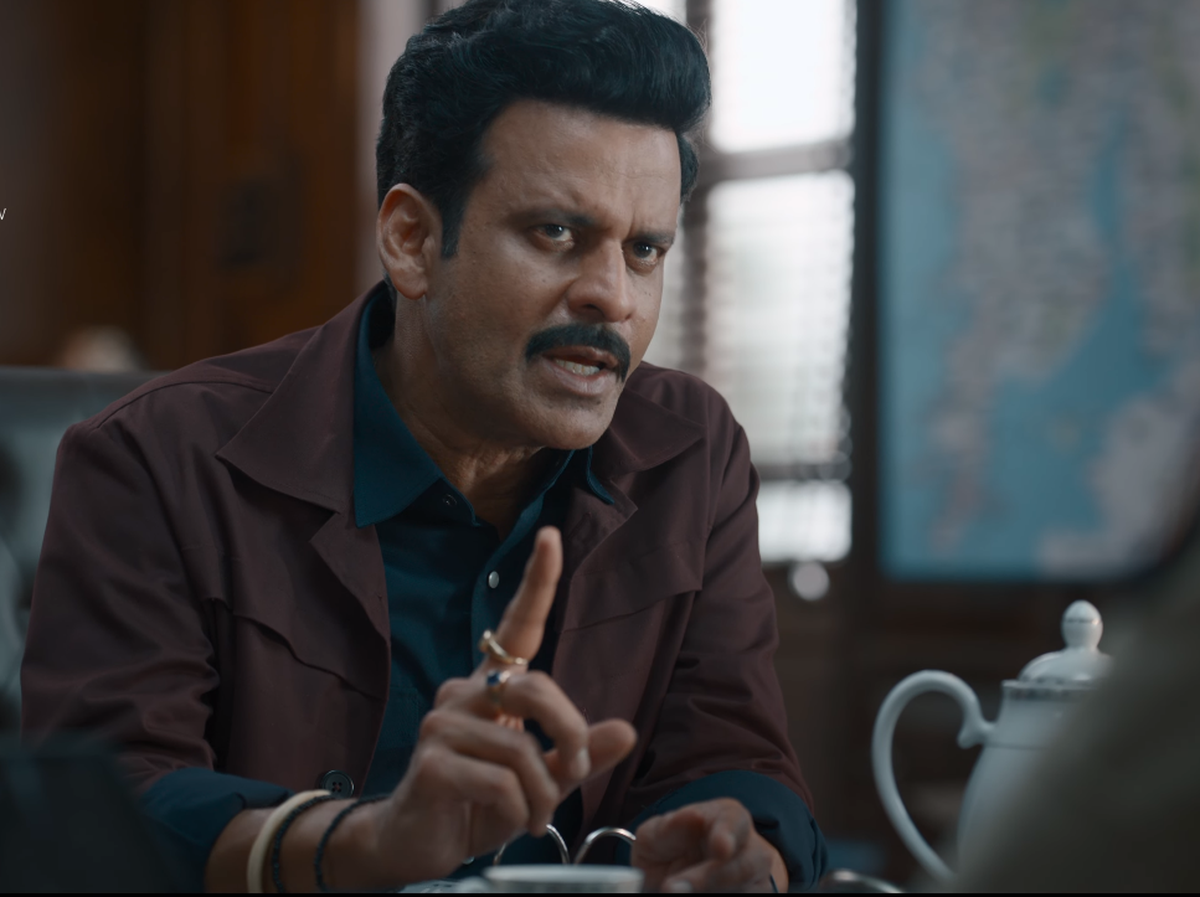“Silence 2: The Night Owl Bar Shootout” is a film that unfortunately falls short of its potential due to several glaring issues that hinder its overall impact. One of the most significant challenges with this movie is the excessive number of characters introduced throughout the narrative. Many of these characters seem to be randomly inserted into the story without clear relevance to the main plotline, resulting in a dilution of focus and making it difficult for viewers to connect with the central storyline and its key players.
The film’s protagonists, led by Avinash Verma and his team, exhibit an uncanny ability to solve complex problems based on mere assumptions, often without requiring substantial evidence to support their claims. This unrealistic portrayal of investigative work undermines the film’s credibility and diminishes the suspense and intrigue that could have otherwise been generated through genuine investigative methods.

The pacing of the story is another area where the film struggles to maintain consistency. The plot shifts abruptly between locations, such as Mumbai and Jaipur, without providing adequate context or justification for these sudden transitions. This erratic narrative structure compromises the film’s believability and makes it challenging for viewers to fully immerse themselves in the unfolding events.
Adding to the film’s unintentional comedic elements is the self-assured and often preachy demeanor of Avinash Verma. His tendency to dispense advice and critique his team’s performance comes across as comically out of touch, adding unintended humor to the proceedings.
Furthermore, the screenplay wastes valuable screen time on the backstories of peripheral characters who ultimately contribute little to the overall plot. These unnecessary diversions serve as distractions rather than enriching the narrative, resulting in a disjointed and unfocused viewing experience.

Perhaps the most glaring flaw in “Silence 2” is its handling of sensitive subject matter, namely human trafficking and the exploitation of young girls. The film fails to evoke a genuine emotional response or create a sense of empathy towards the victims of these heinous crimes. Instead, the focus often shifts towards glorifying Avinash Verma and his team, portraying them as infallible heroes whose detective prowess rivals that of legendary characters like Chacha Chaudhary.
The lack of character development further exacerbates the film’s shortcomings. Most characters are relegated to one-dimensional roles without proper arcs or meaningful growth, leaving viewers feeling disconnected and indifferent towards their fates.
In conclusion, “Silence 2: The Night Owl Bar Shootout” is a film that, despite its intriguing premise, struggles to deliver a cohesive and engaging narrative. Its bloated cast, disjointed storytelling, superficial treatment of serious subject matter, and lack of character development ultimately hinder its success. While the film offers moments of intrigue and unintentional humor, these fleeting glimpses of promise are overshadowed by its numerous flaws and missed opportunities. A more focused approach to storytelling, coupled with stronger character development and a more nuanced exploration of its themes, could have elevated the film and made it a more compelling and impactful viewing experience.
“Silence 2: The Night Owl Bar Shootout” has stirred quite a controversy, especially with its portrayal of marginalized communities and the absence of depth in its characters. One of the most glaring issues is the lack of a well-developed backstory for Arjun Singh, a character whose motivations and actions seem to lack clarity. Instead of exploring the complexities of his character, the film reduces him to a mere caricature obsessed with Shakespeare’s plays and costumes. This oversimplification does a disservice not only to the character but also to the audience who deserves a richer and more nuanced narrative.

Furthermore, the film perpetuates harmful stereotypes by linking a gay character’s actions directly to their sexuality, rather than portraying them as a multifaceted individual. This approach not only reinforces prejudice but also misses an opportunity to challenge and expand societal perceptions.
The direction of the film also leaves much to be desired. The narrative is cluttered with unnecessary subplots, scenes, and moments that distract from the main storyline, making it difficult for viewers to stay engaged. The pacing is uneven, with the story taking an unnecessarily long time to reach its climax, which is further marred by the introduction of an unexpected character who has had minimal presence throughout the film. This lack of cohesion and focus severely undermines the storytelling, leaving the audience bewildered and disconnected.
It’s perplexing how a film with such glaring flaws in its writing and direction could have received approval from a platform like Zee5. The disjointed storylines, inconsistent character development, and overall lack of narrative coherence raise questions about the decision-making process behind the film’s production.
In conclusion, “Silence 2: The Night Owl Bar Shootout” falls short in delivering a compelling and socially responsible narrative. Instead of addressing important issues with sensitivity and depth, it resorts to lazy stereotypes and convoluted storytelling, ultimately failing both its characters and its audience.

The film’s narrative struggles with pacing issues, often meandering aimlessly instead of driving the story forward with purpose and momentum. Avinash’s character, instead of being a compelling leader, comes across as overly preachy and confrontational, which detracts from the viewer’s engagement with the storyline. The excessive time spent on berating his team and offering unsolicited advice to unrelated characters further dilutes the plot’s intensity and focus.
The climax, a pivotal moment in any thriller drama, feels rushed and lacks the tension and suspense that should accompany such a crucial scene. The revelation of the culprit is disappointingly simplistic, failing to deliver the shock or surprise that audiences typically expect from a well-crafted mystery. Instead of building suspense leading up to the reveal, the film drags on, leaving viewers impatient and disinterested.
The film’s editing is another area that falls short, with scenes feeling disjointed and disconnected from one another. The lack of cohesive editing disrupts the flow of the narrative, making it difficult for viewers to stay invested in the story. Moments that should have been impactful are overshadowed by poor pacing and ineffective transitions, resulting in a disjointed viewing experience.
On the performance front, Manoj Bajpayee, a talented actor known for his nuanced portrayals, seems to struggle with his character’s portrayal. Forced to overact and ham it up, Bajpayee’s performance feels forced and unconvincing, failing to do justice to his character’s complexity and depth. It’s disheartening to see such a gifted actor unable to shine in a role that should have been a showcase for his talents.

Prachi Desai, while delivering a competent performance, is given little to work with in terms of character development and storyline. Her character’s arc feels underdeveloped and superficial, reducing her role to that of a mere sidekick to Avinash Verma. With limited scope to showcase her acting prowess, Desai’s talents are largely wasted in a role that offers little substance or depth.
Sahil Vaid and Vaquar Shaikh, playing supporting roles, also suffer from poorly written characters that lack nuance and dimension. Their roles feel one-dimensional and stereotypical, failing to add any significant value to the film’s narrative or overall impact.
In conclusion, the film’s shortcomings in pacing, editing, and character development result in a lackluster viewing experience that fails to deliver on its promise of a gripping thriller drama. Despite a talented cast, including the likes of Manoj Bajpayee and Prachi Desai, the film struggles to rise above its flaws, ultimately leaving audiences disappointed and wanting more from what could have been a compelling cinematic experience.

